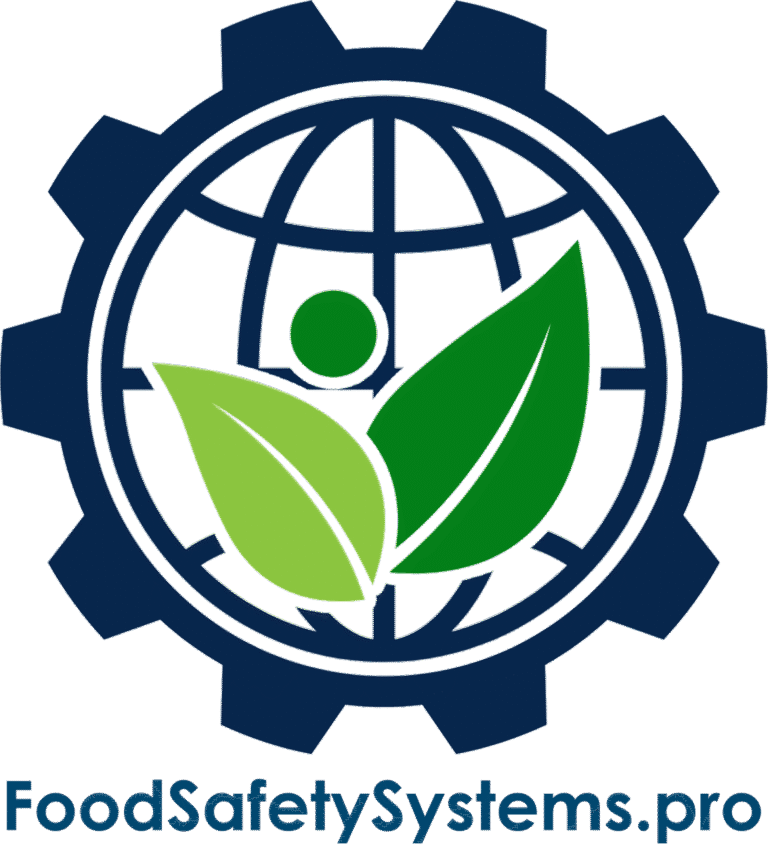Supplier Regulatory Compliance
Aligned with SQF Code Edition 9 – System Element 2.4.2
Requirement Overview
According to SQF Code Edition 9, System Element 2.4.2 requires:
“Suppliers shall comply with applicable food safety legislation relevant to the materials supplied.”
This ensures that all suppliers provide materials compliant with applicable local and international food safety regulations.
Disclaimer: This article is for educational purposes only and is not affiliated with or endorsed by the Safe Quality Food Institute (SQFI). For official SQF documentation, visit www.sqfi.com.

Key Compliance Objectives
-
✓ Verify that all suppliers comply with relevant food safety laws
✓ Track regulations by country and material type
✓ Maintain documentation of certificates and compliance proofs
✓ Monitor supplier compliance status on an ongoing basis
Step-by-Step Implementation Guide
1. Develop a Regulatory Compliance Verification Process
-
Essential Components:
-
• Supplier Declarations confirming adherence to applicable laws
• Change Monitoring system for regulatory updates (FDA, USDA, CFIA, EU, etc.)
• Material Risk Assessments based on origin, composition, and intended use
Evidence to Maintain:
-
• Regulatory compliance procedure
• Signed supplier declarations and attestations
• Notes from monitoring regulatory changes
- • Supplier Declarations confirming adherence to applicable laws • Change Monitoring system for regulatory updates (FDA, USDA, CFIA, EU, etc.) • Material Risk Assessments based on origin, composition, and intended use
- • Regulatory compliance procedure • Signed supplier declarations and attestations • Notes from monitoring regulatory changes
2. Implement Verification Methods Based on Risk Level
-
Scenario Criteria:
| Material Type | Verification Method | Frequency |
|---|---|---|
| High-risk raw materials | Certification + lab testing | Annual |
| Packaging materials | Migration testing + FDA/EU compliance certificates | Biennial |
| Processing aids | GRAS status verification or equivalent review | Upon change |
-
Evidence to Maintain:
-
• Verified documentation logs
• Certificates, test results, and safety data
• Regulatory source references (where applicable)
- • Verified documentation logs • Certificates, test results, and safety data • Regulatory source references (where applicable)
3. Address Non-Compliant Suppliers
-
Escalation Steps:
-
1. Immediately hold or quarantine affected material
2. Conduct a regulatory gap assessment
3. Require a corrective action plan
4. Re-verify supplier compliance before reinstatement
Evidence to Maintain:
-
• Non-compliance incident reports
• CAPA documents with root cause and preventive measures
• Final re-approval documentation
- 1. Immediately hold or quarantine affected material 2. Conduct a regulatory gap assessment 3. Require a corrective action plan 4. Re-verify supplier compliance before reinstatement
- • Non-compliance incident reports • CAPA documents with root cause and preventive measures • Final re-approval documentation
4. Train Staff and Suppliers
-
Training Scope Should Include:
-
• Procurement and QA teams: How to identify regulatory red flags
• Suppliers: Clear expectations around your compliance requirements
• Internal stakeholders: Risks of regulatory non-compliance
Evidence to Maintain:
-
• Staff training records
• Supplier acknowledgment forms
• Training materials and refresher schedules
- • Procurement and QA teams: How to identify regulatory red flags • Suppliers: Clear expectations around your compliance requirements • Internal stakeholders: Risks of regulatory non-compliance
- • Staff training records • Supplier acknowledgment forms • Training materials and refresher schedules
Common Audit Findings & Recommended Fixes
Audit Finding
Recommended Action
Expired or missing certifications
Use automated alerts or dashboards to track expiry dates
No GRAS status for additives
Document GRAS eligibility or request supporting evidence
Import documents not validated
Implement international trade compliance procedures
Suppliers unaware of requirements
Provide documented expectations and refresher training
| Audit Finding | Recommended Action |
|---|---|
| Expired or missing certifications | Use automated alerts or dashboards to track expiry dates |
| No GRAS status for additives | Document GRAS eligibility or request supporting evidence |
| Import documents not validated | Implement international trade compliance procedures |
| Suppliers unaware of requirements | Provide documented expectations and refresher training |
Auditor’s Checklist for SQF 2.4.2 Compliance
Auditors typically verify:
-
• Supplier files with updated compliance documentation
• Certification validity (GFSI, FDA, EU, etc.)
• Risk-based assessment and verification procedures
• Records of non-compliance resolution
• Team understanding of regulatory compliance roles
Implementation Roadmap
Build Your Program
-
✓ Create a documented regulatory verification SOP
✓ Identify material categories and compliance risks
Supplier Onboarding & Evaluation
-
✓ Collect declarations, certifications, and supporting documents
✓ Verify accuracy and relevance for each jurisdiction
Monitor & Enforce Compliance
-
✓ Conduct quarterly or annual reviews of documents
✓ Reassess suppliers when regulations or risks change
Train & Maintain
-
✓ Educate staff and suppliers on your regulatory standards
✓ Schedule periodic updates and system effectiveness reviews
Why This Matters?
A proactive regulatory compliance system:
-
✓ Ensures legal market access
✓ Minimizes recall and enforcement risks
✓ Demonstrates due diligence during audits
✓ Strengthens trust in your supplier network
Need Support Building or Auditing Your Regulatory Compliance Program?
Food Safety Systems provides:
-
✓ Regulatory compliance SOP templates
✓ Supplier verification and documentation tools
✓ Training modules for procurement and QA teams
✓ Audit-prep checklists for regulatory traceability
Privacy Policy | Terms of Service | Disclaimer
Powered by Consultare Inc. Group, A Compliance Company







